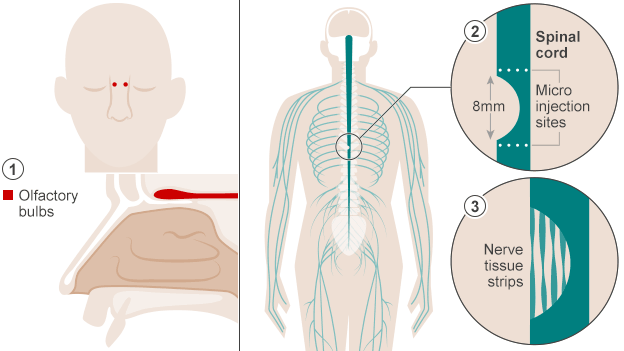Regenerative Medicine
| A paralyzed man has been able to walk again after breakthrough therapy that involved transplanting cells from his nasal cavity into his spinal cord. |
| |
Aman left paralyzed after a stabbing attack has learnt to walk again after undergoing pioneering surgery using cells from his nasal cavity.
Darek Fidyka, who is believed to be the first person in the world to recover from a completely severed spinal cord, said the experience of walking again was like being reborn.
| Related articles |
"It's an incredible feeling, difficult to describe," said the 40-year-old. "You're at a certain moment in your life when you think it will never happen again and yet... it's possible."
Patients with incomplete spinal injuries often recover, but until now complete spinal cord injuries have been broadly regarded as permanent and incurable.
Fidyka, who was paralyzed from wounds inflicted by his partner's ex-husband in July 2010, can now walk with a frame and even drive a car.
"Spinal cord injury is quite easy to do and utterly devastating for the people who have it," said Geoffrey Raisman, of University College London, who pioneered the technique. "This opens a door that was not open before. I think we're looking at something historic."
He described Fidyka's recovery as "more impressive than man walking on the Moon".
Fidyka's recovery has been described as "more impressive than man walking on the Moon." |
By extracting OECs from Fidyka's own olfactory bulb, the transplant was virtually guaranteed to avoid rejection.
It is this ability that scientists have tried to exploit in stimulating repair in the spinal cord.
The research was funded by the UK Stem Cell Foundation and Nicholls Spinal Injury Foundation, founded by the British hotelier David Nicholls, whose son Daniel was paralyzed in a swimming accident at the age of 18. Scientists are now planning to treat ten more paralyzed patients in a carefully controlled clinical trial.
SOURCE BBC
| By 33rd Square | Embed |





0 comments:
Post a Comment